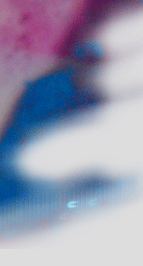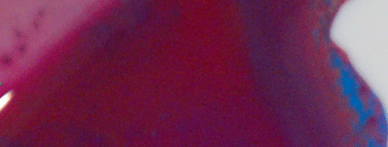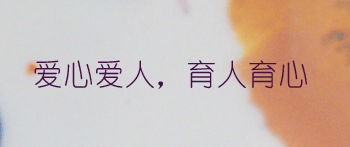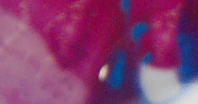 |
胡暁珮,
联合国儿童基金会项目艺术教育专家、中国美术家协会少儿美术艺委会委员。
毕业于中央美术学院美术史系。
2000年,作为访问学者赴德国霍恩海姆大学,之后策划主持了系列中国儿童美术在德国、法国、西班牙、土耳其、埃及、日本的国际巡展活动,进行中外儿童美术的对比研究。
2003年,在《美术》杂志发表论文《真实的震撼——中国儿童美术的未来思考》,首次对中国美术界提出“儿童是谁?儿童美术是什么?”的问题,指出“这些天真弱小的精灵、承传文化血脉的民族后裔,虽然无力选择成人世界的给予,但他们已是美术的实践者、欣赏者和接受者了;作为素质教育的对象,他们的审美经验将影响的不仅是成长到成熟时期生命个体的文化状态,更关系到未来中国国民的整体素质水平甚至民族审美基因的优劣。”
同年,在《美术研究》上发表论文《失落的光环》,强烈反对中国儿童美术教育中的模式化和功利主义,提倡建立尊重儿童身心发展规律和艺术创造力的基本准则,尖锐指出“今天的选择就是明天的后果,我们没有权利剥夺属于孩子的天赐财富,更不能去撕毁他们对艺术的幻想”。
2004年,在《美术》上发表论文《根深蒂固——儿童美术与文化传承》,提出“教育者有极大的可能和自由将中国民族文化的重要元素注入其中,如水墨画和民间美术,使儿童美术在塑造孩子心灵的同时,将文化镌刻于人格上”,呼吁儿童美术教育应重视母体文化。
2005年,创办艺术儿童工作室,
实践全新的美术教育方法,并在新浪网站上开通“美术空间”论坛,直接面对家长进行普及。
由于成功倡导了先进教育理念,2007 年初,工作室被授予“中国美术家协会少儿美术艺委会 “ 艺术儿童 ” 美术教育活动基地”,同年被授予 “联合国儿童基金会早期儿童综合发展项目艺术教育研发基地” 。2008 年,与中国儿童艺术剧院一起被新浪网络评为 “ 最受网友欢迎的艺术团体 ” ,“ 艺术儿童工作室快乐启蒙课程 ” 获全国优秀课程奖。
同年,《CHINA DAILY》(《中国日报》)以CHILDREN OF REVOLUTION(儿童的解放)为题整版报道胡暁珮女士为解放儿童创造力所做出的努力为题整版报道胡暁珮女士为培养中国儿童创造力所做出的努力。
 |
 “让小孩子上我这里来……,因为在这神国的,正是这样的人……”,看到《马可福音》中耶稣的话语,我不得不从心里感激孩子们,是他们让我们这些成人从孩子身上看到了人类最珍贵的、也是上帝所喜悦的单纯,如同生命诞生之时的纯净! “让小孩子上我这里来……,因为在这神国的,正是这样的人……”,看到《马可福音》中耶稣的话语,我不得不从心里感激孩子们,是他们让我们这些成人从孩子身上看到了人类最珍贵的、也是上帝所喜悦的单纯,如同生命诞生之时的纯净!
赞美上帝,他把创造的灵给了我们每个孩子,并通过艺术显明出来!
如果我们能为孩子们做些什么,就必荣幸地做,千万不可做错!
从艺术儿童工作室创办至今,我也经历了数不清的珍贵时刻:当孩子们在一张张作品中闪耀出创造的光芒;当一颗颗被抑制的心灵慢慢恢复感觉,从模式思维中解放出来;当表达的经验不断成熟走入更美善的境界……,我不禁为他们的生命活力而感慨不已!
所以,我坚信:这一代的中国儿童必然属于未来的创新与开放,而不属于过去时代的封闭与僵化,更不属于当今时代的功利与模式,通过艺术形式而彰显的创造行为正是形成他们创造性思维的最有效途径,这是艺术儿童教育理念和课程体系所始终强调的重点。
在艺术儿童工作室,每个孩子都被看为宝贵,每个孩子的眼睛都是明亮而闪烁的,我们小心呵护那目光中的纯真与美善,更希望用来自上帝的爱去开启孩子心中的眼睛!
艺术儿童在美术教育中始终提倡:母体文化的导入、创新思维的形成、审美能力的培养、表现经验的提升、形象思维对逻辑思维的促进、艺术的通感和素养对生命品质的提高。
在此,我感谢家长朋友们为孩子的不懈付出,也为风里来雨里去的奔波而感动!
还感谢前辈教育家和艺术家们的支持和鼓励和国内外各个机构的关注!
我衷心地祝愿每一个孩子都在艺术的滋养中快乐地成长,象一棵棵小树成长为开花结果的大树,而那灿烂的果实就是创造力!
 |
 |
Painting words from littles
By Cheng Anqi
When all the lights in Qian He residents area are lit up, white or yellow,
the pretty colorful pigment shine out with gentle beams from a set of
French windows at the first floor always bring warmness and recall the
days of childhood to the passers-by.
Unexpectedly, the small apartment that situated in group of structures
is the research base of United Nations Children's Fund (Unicef) for developing
children's early comprehension art creation.
The Artchildren Studio, a kind of family art studio set on the fourth
ring road and opened in 2005, quietly opens its doors every night to little
kids sent by their parents. Last Thursday, Hu Xiaopei, studio's founder
and teacher, together with her assistant girl Hai Luo, figured on giving
a special present to every pupil as a souvenir that can take their farewell
of the past 2007.
"The keepsake was a accordion fold book, I hope them limn the things
or people that interested them in 2007. It might be family, peers, surrounding,
or animal." Hu said. "It could be a progress, a happiness, a
story or four seasons."
She was in no hurry to handed out blank books. She stood in front of children
sitting around table, explaining that the book was originated in Ming
Dynasty and let them imagine what was the book like. Every free answer
from kiddies was surprised her, "fun!", "hill!", "saw
tooth!", "accordion!".
Hu and her husband Wang Dawei were both graduated from China Central Academy
of Fine Arts. Decade ago, Wang set his first personal painting exhibition
in Germany and signed two-year contract with local gallery. "Then
we settled in there and during that time, My friends sent me their kids'
art works, wondering whether there could be a exhibition for children,
which really inspired me to carry out the plan."
She had since got round trip between Germany and China to collect the
kids' pictures and arranged the anticipant exhibition in phases. "I
selected the work from my modern aesthetic angle, not fixed mode set by
some Children Palace in China."
Even though, the satisfactory 180 art works rippled Hu's nerve one day
before the German show in 2000. The display was set in Germany Youth Art
College in Brandenburg. Pictures made by Chinese kids were hang side to
side on lunette while its counterpart, Germany picture, were hang on the
other side.
"Seeing these works, Enola, the curator, asked me 3 questions, which
struck me to dumb." Hu still has bear that questions in remembrance.
Firstly, why did works from 180 children seemed to be like instructed
by only 10 teachers, and were full of stereotypes; Then the creation issue.
Enola hardly understand that a portrait of man in great age was depicted
so in detail that every single wrinkle in his face could even be traced
out, which was not supposed to be attributed by a little child. On the
other hand, Chinese kids creative space were all fenced up and that reflected
on the drawing papers.
When works were put side by side, the whole effect prove Enola's worry.
"To detract visitors' attention on the problems, we relocated the
pictures and set them on the wooden frames, and then have them S shaped."
Hu recalled. "The questions enable me to find out the gap and lay
stress on education of beauty, creation and inspiration." Hu said.
"Kids, wherever they come from, present strong sensibility on colors,
and the problem is on schools and families."
Never had the 39-year-old considered herself dealing with children, but
she was happy to devote herself to dig children's inspiration on art creativity.
Since 2002, she devised China International Children art Exhibition Tour
in Germany, France, Italy, Holland, Belgium and Greece. 2004 saw the first
painting exhibition by Chinese kids in Egypt and Turkey.
"When the trip finished, the kids said that they'd heard Picasso,
but their little foreign friends asked them who's China's master of ink-and-wash
paintings. They can tell legend of Aegean but got a puzzled face when
talking about Mythical Legends of Mountains and Seas in foreign group."
Hu was surprised that the extraordinary power from international activity
brought a lot to the kids. "One child told me that houses in Germany
were old but designed decently and self-painted, and she wanted to do
the same way."
The art studio has been running two years and is decorated with children's
artwork, animate style pictures, plaster cast, mini-houses made of branch,
masks and their happy memory photos.
"I hung their pictures as long as they'd like to." He said,
pointing a "shark" one. It comprise three colors, green, occupies
upper paper, purple takes the other half, and a black shark curves upward
in the middle. "It's simple, but lovely and he wants me to find a
space on the wall."
Wang Ziqi, 5, one of her pupil, came to the studio two weeks ago and considered
the Christmas tree on the paper only be a triangle and can be instead
by no other shape. He previously learned drawing at a training center
for children, where imparted drawing skill in a monotonous and fixed layout.
"It's sad when he was hard up for any ideas of shape. A string of
cakes, end by end, of five-pointed stars, of cars or apples are all ok,
children's mind are like kaleidoscope!"
In a child's life, the first five years are perhaps the most important.
It is scribbling stage. During this time a child develops traits in learning,
attitude, and self esteem. Art can significantly contribute to a child's
development. Free Art creation encourages a child to interact with his
environment.
So Hu keep her own image on painting class but let them go in a free drawing
style, and no eraser on the table. "They've get use to draw without
eraser, not because they master any skill but to change the slip of pen
into another part of art. There's no right or wrong, pro and con in children
painting."
The studio gives teamwork task as well. "I offer sets of building
blocks at do-it-yourself courses. They piles up blocks into various shapes
of houses and what we I do is just tell to link the buildings as a neighborhood,
including roads, park, community, hospital, etc."
Hu emphasized that Nation and society hardly survive without art, just
like people cannot breathe without air. Art education in family has been
a key word in developed country. They take it as a natural activity and
part of their life, like Going to art gallery, museum or concert. They
provide an excellent chance and environment for family art education,
which indicates that we have much leeway to fetch up.
A recent survey shows that museum and concert goers makes up 70%, 60%
in Germany. Americans makes less but attach high attention on kindergarten
art education while free access to the museum in Japan. Hong Kong China
offers art lectures, which are admitted gratis in holiday and are receive
support from government.
"I hope more families are well aware of the important of aesthetic
education in family." Hu said.
One and a half hour class was coming to the end. Every child left a symbol
on the cover of the accordion folding book and expand it the dry the pigment.
Parents came in with curiosity and couldn't wait to their babies scribbling
works one by one. Some of parents looked bewildered on the variably colored
book, but feel that only the studio enable the kids create iridescence.
CHINA DAILY
|
 |



























